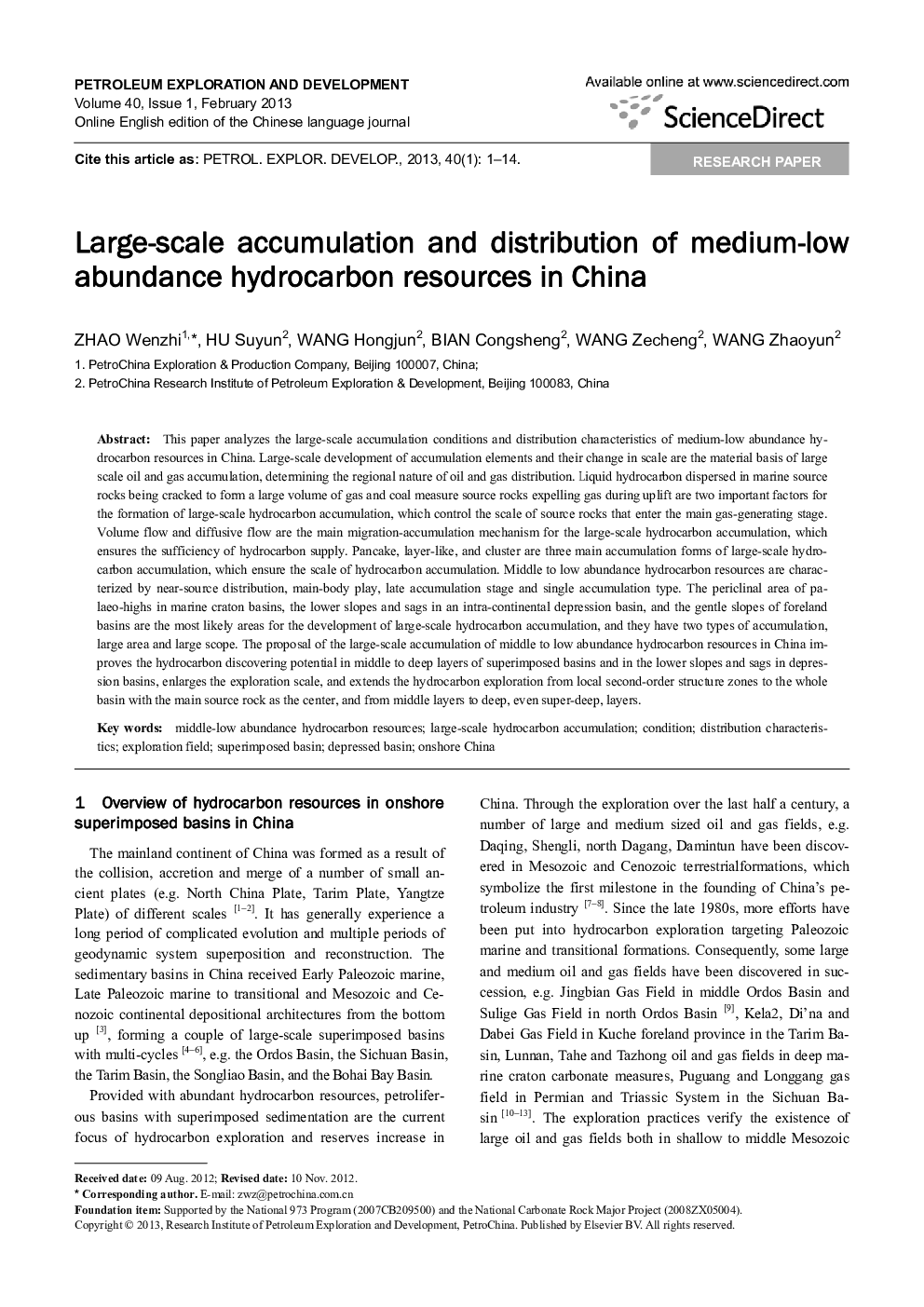| کد مقاله | کد نشریه | سال انتشار | مقاله انگلیسی | نسخه تمام متن |
|---|---|---|---|---|
| 4720447 | 1355332 | 2013 | 14 صفحه PDF | دانلود رایگان |
This paper analyzes the large-scale accumulation conditions and distribution characteristics of medium-low abundance hydrocarbon resources in China. Large-scale development of accumulation elements and their change in scale are the material basis of large scale oil and gas accumulation, determining the regional nature of oil and gas distribution. Liquid hydrocarbon dispersed in marine source rocks being cracked to form a large volume of gas and coal measure source rocks expelling gas during uplift are two important factors for the formation of large-scale hydrocarbon accumulation, which control the scale of source rocks that enter the main gas-generating stage. Volume flow and diffusive flow are the main migration-accumulation mechanism for the large-scale hydrocarbon accumulation, which ensures the sufficiency of hydrocarbon supply. Pancake, layer-like, and cluster are three main accumulation forms of large-scale hydrocarbon accumulation, which ensure the scale of hydrocarbon accumulation. Middle to low abundance hydrocarbon resources are characterized by near-source distribution, main-body play, late accumulation stage and single accumulation type. The periclinal area of palaeo-highs in marine craton basins, the lower slopes and sags in an intra-continental depression basin, and the gentle slopes of foreland basins are the most likely areas for the development of large-scale hydrocarbon accumulation, and they have two types of accumulation, large area and large scope. The proposal of the large-scale accumulation of middle to low abundance hydrocarbon resources in China improves the hydrocarbon discovering potential in middle to deep layers of superimposed basins and in the lower slopes and sags in depression basins, enlarges the exploration scale, and extends the hydrocarbon exploration from local second-order structure zones to the whole basin with the main source rock as the center, and from middle layers to deep, even super-deep, layers.
Journal: Petroleum Exploration and Development - Volume 40, Issue 1, February 2013, Pages 1-14
